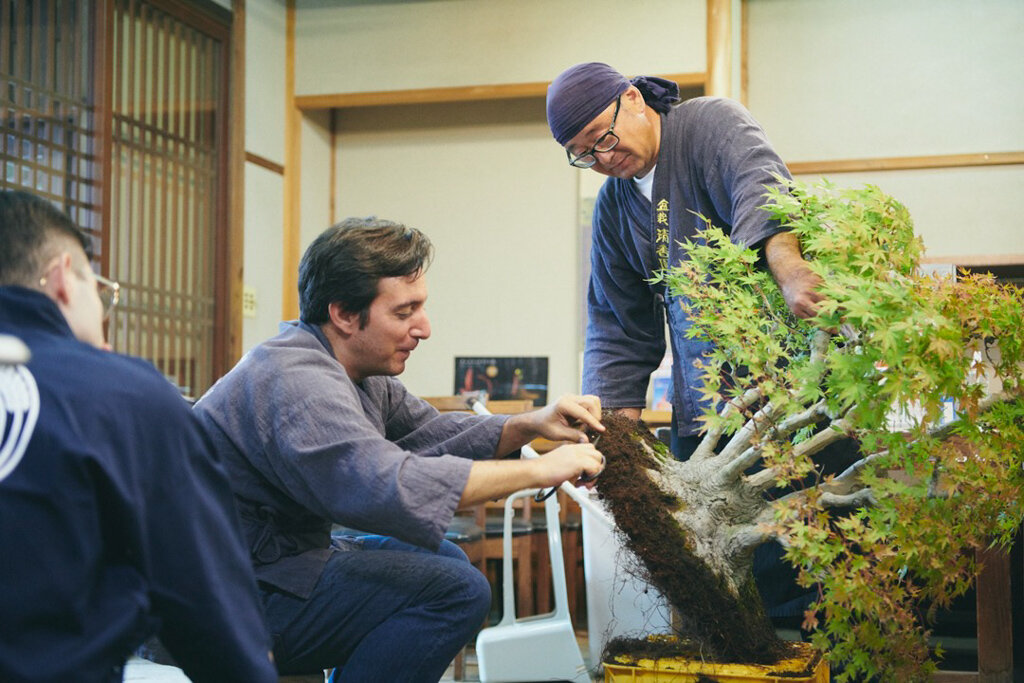The History of Bonsai, Japan’s Living Art
The beauty of the natural world, captured in a single pot.
Bonsai, the art of cultivating miniature trees in containers, is a labor of love, dedication, and artistry, that has been celebrated in Japanese culture for centuries. While the roots of bonsai extend to ancient China, where the veritable art was known as “penjing,” this horticultural art entered Japan during the heyday of the Heian Period. As time passed, Japanese bonsai slowly developed, becoming its own distinct style and practice that continues to captivate audiences today.
Learn more about the history of bonsai in Japan, from its origins of importation to modern evolutions.
Early Beginnings of Bonsai in Japan
Like many other types of art forms and cultural practices, such as the culture of drinking tea, bonsai was imported to Japan by Buddhist monks who had been completing religious study in China. These devout disciples valued the meditative art of shaping the trees over a laborious number of years; therefore, bonsai in Japan was originally cultivated primarily within temples, and later, the homes of the aristocratic class. As the practice spread, bonsai began to reflect Japanese aesthetics, focusing on simplicity, asymmetry, and the beauty of imperfection—all principles firmly rooted in Zen Buddhism.
Bonsai in the Age of the Samurai
The Kamakura Period of Japan (1185-1333) was defined by the surging influence of the samurai, who adopted bonsai as part of their cultural pursuits. This warrior social class not only popularized bonsai as an art form in Japan, but also countless other types of aesthetic philosophies and practices as well, such as masked Noh theater and sado, tea ceremony. During the transition to the Muromachi period (1336-1573), the art of bonsai saw the emergence of more refined techniques and styles, with bonsai becoming a symbol of prestige among the warrior class and nobility. This era also marked the introduction of "viewing stones" (suiseki), which complemented bonsai displays and added to the overall aesthetic experience.
The Spread of Bonsai Culture in the Edo Era
Bustling cities, flourishing art, and a stable era of peace characterized the Edo period (1603-1868), as political stability and the developing merchant class led to the increasing accessibility of cultural practices to those outsider of the upper classes. Bonsai then, like countless other arts and cultures during this period, proliferated among the common people. During this time, bonsai exhibitions and markets became popular, and bonsai cultivation spread across Japan. Bonsai artists began developing distinct styles, such as the formal upright (chokkan), informal upright (moyogi), and cascading (kengai) forms, while an emphasis on seasonal changes and natural beauty became central to bonsai aesthetics, aligning with traditional Japanese values.
Bonsai in Modern Japan and the Global Stage
The Meiji period (1868-1912) ushered in a wave of modernization in Japan, and with it, bonsai began to soar in international recognition. When Japanese bonsai was exhibited at international expositions, the carefully curated minture trees captivated audiences worldwide. Then, after World War II, returning soldiers and increased global interest further spread bonsai culture beyond Japan’s borders.
Today, bonsai is a global phenomenon, appreciated by enthusiasts and collectors worldwide. Japan remains a hub for bonsai culture, with renowned bonsai gardens, museums, and festivals celebrating this ancient art form. The Omiya Bonsai Village in Saitama, which nearly single handedly sustained the practice of bonsai in Tokyo following the Great Kanto Earthquake in 1923, and the annual Kokufu-ten Bonsai Exhibition in Tokyo, remain as prime examples of Japan’s ongoing dedication to preserving and innovating bonsai traditions.
The history of bonsai in Japan is no doubt a testament to the country's deep connection with nature and artistic expression. From its introduction from China to its development into a refined and cherished cultural practice, the history of bonsai in Japan is varied, and its existence continues to inspire people all around the world.
Bonsai Experiences
Embrace centuries of cultural tradition, captured in the delicate form of a single tree, by experiencing the art of bonsai in Japan. Learn from seasoned bonsai masters as they guide you through the careful pruning, shaping, and philosophy behind this ancient practice. Immerse yourself in how the legacy of bonsai is preserved—branch by branch, root by root.
The Art of Bonsai
Observe and feel the meticulously loving art of shaping bonsai trees.




